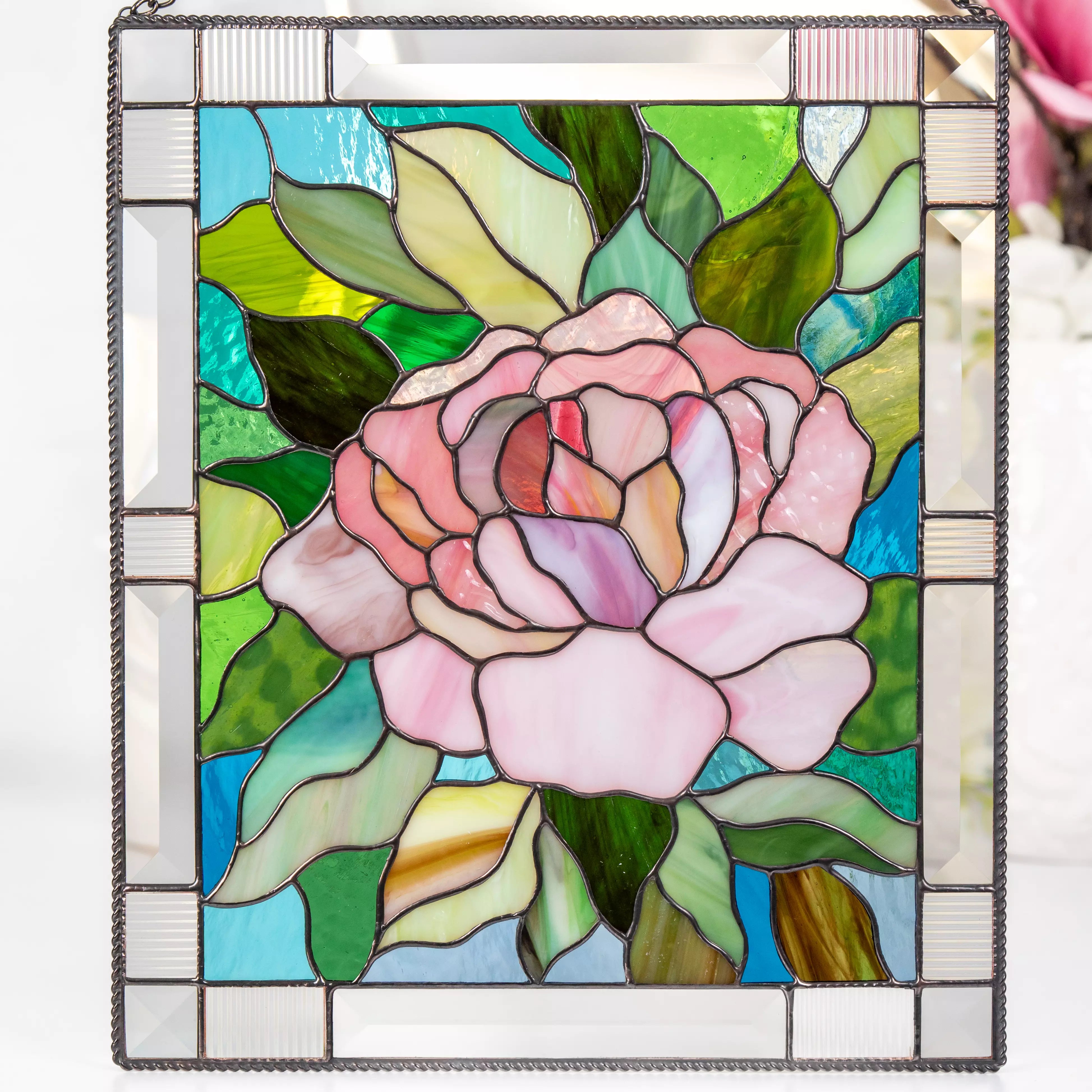Stained Glass Tiffany Technique: History, Features, and Application in Modern Design
Stained glass has a rich history that dated back to many centuries ago, with various methods and styles emerging throughout the years. One of the most renowned and enduring techniques is the Tiffany technique of copper foil, which was developed by Louis Comfort Tiffany in the nineteenth century. This innovative approach to handcrafting stained glass products has left an indelible trace on the branch of interior design. Today we would like to share with you the history, distinctive features, and modern applications of the Tiffany technique in stained glass art nowadays.

The Tiffany Technique: A Brief History
The Tiffany technique of creating stain glass pieces, also known as the method copper foil, became revolutionary in the world of stained glass. It was suggested by Louis Comfort Tiffany, an American artist and designer, in the late 1800s. Before this innovation, the traditional lead came technique had been dominating in the stained glass industry. Louis Tiffany provided a method that would allow for greater intricacy, precision, and flexibility in design, which would also make the stained glass items less fragile.
Key Features of the Tiffany Technique
- Copper Foil: At the heart of the Tiffany method lays the use of thin copper foil. Artists wrap around the edges of every glass piece, which provides integrity of the item as a whole. Besides, copper foil allows for a more delicate and detailed design.
- Opalescent Glass: Tiffany is known for his use of opalescent glass, which contains multiple colors and textures within a single sheet. Such type of glass helps create a marvellous interplay of light and color when lit by the sunrays, adding depth and dimension to the masterpiece. Opalescent glass can be surely called a hallmark of Tiffanystained glass art work.
- Soldering: The copper foil-wrapped tiny glass pieces are then have to be soldered together. This soldering process does not only ensure the integrity of the stained glass piece, but also creates decorative lines that can be further enhanced with patina to achieve a desired finish effect.
- Artistic Freedom: One of the Tiffany technique's overweighting advantages is the freedom it offers in design. Talented artists can handcraft fanciful unique patterns, exquisite details, and use a wide color spectrum that would be challenging to achieve with lead came alone. Such versatility and an ability to choose have made the Tiffany technique especially popular for producing floral, geometric, and nature-inspired designs.
Tiffany Techniques in Modern Interiors
While the Tiffany technique was developed over a century ago, it continues to thrive in the modern world of design. Its everlasting appeal and adaptability make it a beloved choice for a variety of applications:
- Stained Glass Windows: Tiffany-style stained glass windows beautifies homes, churches, cathedrals and public buildings all around the world. The ability to convey intricate religious or thematic narratives with vivid colors and subtle gradations with the help of L. C. Tiffany method of copper foil remains one of a kind.
- Lamps and Bras: Stained glass lamps handcrafted according to the Tiffany technique are iconic pieces of decorative lighting. The use of unique opalescent glass in lampshades created a warm and inviting ambiance when the light shines through the glass, displaying an attractive play of colors.
- Window Decor: Stained glass panels, suncatchers, and other decorative items, such as mirrors reflect the Tiffany technique's versatility in adorning interior design. Stained glass custom-designed pieces are also possible to create to make the item perfectly fit your interior.
The Tiffany technique, with its distinctive features and timeless beauty, has left an indelible mark on the world of stained glass artistry and design. Louis Comfort Tiffany's innovation in using copper foil, opalescent glass, and intricate soldering methods has allowed for greater artistic expression and design freedom.
Today, this technique continues to thrive in various applications, enriching our homes, public spaces, and artistic creations with its exquisite beauty and craftsmanship. As we look to the future, the Tiffany technique remains a vibrant and enduring part of the ever-evolving world of design. And together with our talented team we are happy to implement in life all your artistic ideas and potential. Contact us to become the part of creation of the unique item of decor for your place of living.


